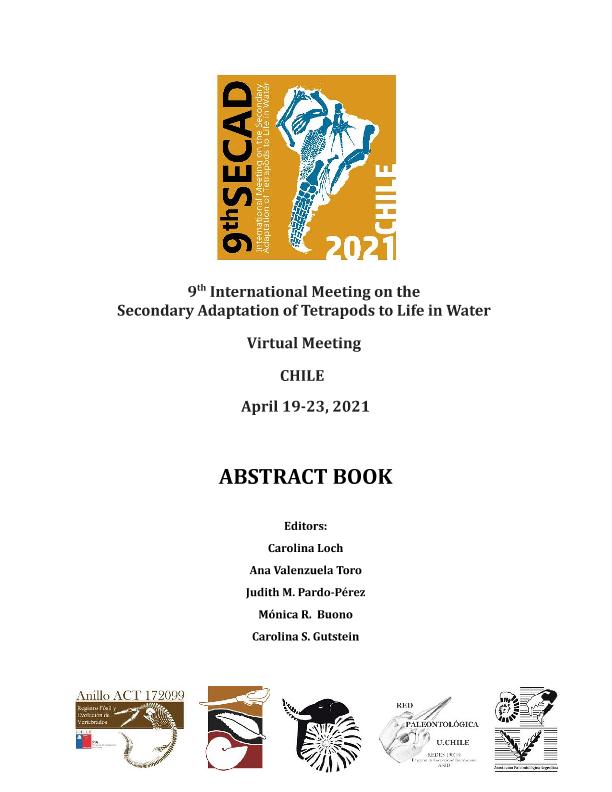Evento
Fingers zipped up or baby mittens?: Two main tetrapod strategies to return to the sea
Fernández, Marta Susana ; Vlachos, Evangelos
; Vlachos, Evangelos ; Buono, Mónica Romina
; Buono, Mónica Romina ; Alzugaray, Lucía; Campos, Lisandro
; Alzugaray, Lucía; Campos, Lisandro ; Sterli, Juliana
; Sterli, Juliana ; Herrera, Laura Yanina
; Herrera, Laura Yanina ; Paolucci, Florencia
; Paolucci, Florencia
 ; Vlachos, Evangelos
; Vlachos, Evangelos ; Buono, Mónica Romina
; Buono, Mónica Romina ; Alzugaray, Lucía; Campos, Lisandro
; Alzugaray, Lucía; Campos, Lisandro ; Sterli, Juliana
; Sterli, Juliana ; Herrera, Laura Yanina
; Herrera, Laura Yanina ; Paolucci, Florencia
; Paolucci, Florencia
Tipo del evento:
Encuentro
Nombre del evento:
9th International Meeting on Secondary Adaptation of Tetarpods to Life in Water
Fecha del evento:
19/04/2021
Institución Organizadora:
Asociación Chilena de Paleontología;
Asociación Paleontológica Argentina;
Título del Libro:
9th International Meeting on Secondary Adaptation of Tetarpods to Life in Water: Abstract Book
Editorial:
Asociación Chilena de Paleontología
Idioma:
Inglés
Clasificación temática:
Resumen
The application of network methodology in anatomical structures offers new insights on the connectivity pattern of skull bones, skeletal elements, and their muscles. Anatomical networks helped understanding better the water-to-land transition and how the pectoral fins were transformed into limbs via their modular disintegration. Here, we apply the same methodology to the forefins of 19 tetrapods that have been secondarily adapted to the marine environment, including turtles, ichthyosaurs, mosasaurs, plesiosaurs, metriorhynchidcrocodylomorphs, and mammals (whales, dolphins, sea lions, seals, and sea cows). We find that these animals achieved their return to the sea with four types of morphological changes, which can be grouped into two different main strategies.
Palabras clave:
Forefin
,
Anatomical networks
,
Water-to-land transition
,
Modularity
Archivos asociados
Licencia
Identificadores
Colecciones
Eventos(IPGP)
Eventos de INSTITUTO PATAGONICO DE GEOLOGIA Y PALEONTOLOGIA
Eventos de INSTITUTO PATAGONICO DE GEOLOGIA Y PALEONTOLOGIA
Citación
Fingers zipped up or baby mittens?: Two main tetrapod strategies to return to the sea; 9th International Meeting on Secondary Adaptation of Tetarpods to Life in Water; San Vicente de Tagua Tagua; Chile; 2021; 95-95
Compartir



